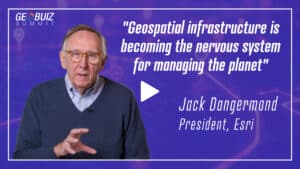India’s Smart City Mission is entering its 9th year now, but what is its progress, challenges, and how long will it take to create 100 smart cities in India?
It is estimated that by 2030 India will be home to 60 cities with a population of more than 1 million and 6 megacities with a population of more than 10 million. This will undoubtedly put a heavy burden on infrastructure and civic amenities.
The teeming population and ongoing trend of urban migration will put tremendous pressure on cities to provide resources such as water, infrastructure, transport, energy, healthcare. This means there is a need to rapidly make our urban clusters more livable, sustainable and resilient.
However, the picture from the ground tells a different tale altogether. The megacities of Delhi and Mumbai are regarded as the economic engines of India, and yet every year, heavy rainfall lasting a couple of hours or days causes havoc there. Many areas experience power failure, and loss of internet connectivity for days.
There is intense water logging in areas which shows the inability of infra to withstand heavy downpour and similar stresses. If anything, this lays threadbare, the Smart City Mission’s eight years of progress, and our readiness in terms of climate resilient urban areas. This serves as an indictment of our core priorities and the progress made so far.
Smart Cities Report Card
According to the latest updates on Smart City Mission, 66 out of the selected 100 cities, have not yet met their physical targets even after eight years. Due to this, the deadline for the completion of the mission has been extended to July 2024.
However, as per the Ministry of Housing and Urban Affairs (MoHUA), more than two-thirds of the total 7,804 projects under the Smart Cities Mission (SCM) have been completed as of January 2023. There’s a dissonance between the two data points that needs closer scrutiny.
“We received requests from cities and Members of Parliament to give more time to complete the sanctioned projects,” says an official from MoHUA.
According to the report’s 18th Report of Standing Committee on Housing and Urban Affairs (2022-23):
The last round of selection under Smart City Mission was made in January 2018 and hence the stipulated period of 05 years has completed. As regards financial allocation made by the Ministry, out of overall financial support of Rs.48, 000 crore to the Mission, Rs.36, 561 crore has been released and Rs.33,012 crore (90% of total released) have been utilized by the Smart Cities.
Furthermore, the report says that for the further 100 Smart Cities projects worth Rs.2,05,018, so far 7821 projects worth Rs.1,81,349 crore have been taken up. And 5343 projects worth Rs.1, 00,450 crore have reportedly been completed.
That said, the city-wise physical progress of projects taken up under the Smart City Mission shows that there is a stark difference in the performance of various Cities.
On one hand, 32 Smart Cities have completed more than the number of Projects planned for implementation under SCM, in some cases even four times more than the actual target. On the other hand, the remaining 68 Smart Cities are yet to meet the project completion targets, wherein the performance of some cities is quite dismal.
Therefore, the total number of completed Projects gives a misleading picture because it also takes into account the excess projects accomplished by 32 performing Smart Cities.
The Committee is of the opinion that if the number of ‘excess projects’ is removed from the total completed projects then the actual number of projects completed under 36 the Mission would be far less than projected.
The fact remains that, 68 Smart Cities have not achieved their physical targets under the Mission by the original due January 2023, leading to an extension till June.
ALSO READ: How Geospatial Technology Helps Create Future Smart Cities
Identifying the Root Cause?
As per the same report, ULBs (Urban Local Bodies) lack core competence, trained manpower and finances for completion of urban infrastructure projects. However, the ULBs did ‘reasonably well’ in implementing targeted schemes such as AMRUT & SBM.
This underscores the inability of these local bodies to deliver end-to-end on comprehensive projects such as the Smart Cities Mission. Another Issue is the prevailing confusion, which often leads to projects being dropped.
In light of this, the committee issued a few recommendations; amending the relevant provisions governing Smart City Special Purpose Vehicles (SPVs) to ensure the following:
- A fixed tenure of 3 years to CEOs of Smart city SPV
- No additional charge is given to CEOs of smart city SPVs
- Job of CEO of smart city SPV is full time
Reasons for Delay
The Committee says that multiple challenges on-ground, including COVID-19 pandemic, multi-sectoral projects, local challenges related to land, labor etc., has led to slowdown in progress.
While examining the Smart City Mission, in 2021 the Committee came across some irregularities in implementation of smart cities works such as redoing of same work again & duplication of work, project cost higher than the market rate, frequent dropping of projects after finalization of proposals, etc.
The Committee felt that Geospatial Management Information System (GMIS) used for real-time monitoring of Smart City projects is not serving its intended purpose and there is a need for on-ground verification with the involvement of local representatives as they are aware of local developments.
It therefore, recommended the Ministry to put in place a robust monitoring mechanism for Smart Cities Mission for on ground verification of projects by a team consisting of Mission Director, State representative and local Member of Parliament and MLA.
However experts believe that additional reasons could be unavailability of funds in timely manner, existence of silos, and diversion of funds for state priorities.
Technology Solutions
Technology plays a crucial role when it comes to making a city smart. From integrated solutions, better connectivity, waste management solutions, traffic management, to addressing utility related problems, safety of the citizens, e-governance, thus technology will only empower the cities.
Information and communication technology, sensors, geospatial, IoT, AI and blockchain are crucial to tackle the emerging problems in the city and maintain law and order through detailed data analysis.
According to Deloitte-ThoughtLab Global City Survey, 94% of city leaders surveyed indicate climate change, pollution as the biggest challenge that the cities will face in the next five years.
Cities need to identify the gaps where advanced technologies can be adopted, and digital innovation can be encouraged to address those gaps such as digital talent and skill improvement, cybersecurity, and real-time assessment of projects.
“City leaders are betting big on AI and automation, and they believe that with support from government, this can help drive digital innovation,” as per the survey.
The nodal ministry for the Smart Cities Mission, the Ministry of Housing and Urban Affairs (MoHUA) is working with various agencies, technology providers to formulate smart city technology adoption, utilization of tech in developing solutions that are interoperable, scalable and capable of connecting with other smart cities for data sharing and other functionalities.
ALSO READ: Unified Geospatial Platform for Indian Smart Cities
How GIS Aids Smart Cities?
Geospatial visualization, HD maps, and interactive 3D models and dashboards play a crucial role in understanding the needs of the people, figure out the pain-points and devise innovative solutions.
“With technology being at a pinnacle in this century and the geospatial ability to create, manage, analyze and visualize the data of spatial data, the sky is the limit,” says Rizwan Khan, Director & Subject Matter Expert – Smart Cities, JLL to Geospatial Artha.
Rizwan believes that Geospatial/Maps are a game changer when it comes to the Smart Cities, by providing real-time data about the citizens’ information wayfinding solutions for the tourists or visitors visiting a particular place, using AI on the airports for immigration and logistical purposes, safety and security of the citizens and much more.
GIS enables city administrators to gain an in-depth understanding of the cities, identify the problems more effectively and benefit from the most effective solutions. GIS plays a vital role in the Smart City ecosystem.
Esri India is one of the vendors that provides GIS Platforms to Indian Smart Cities. Esri India works with more than 45 Smart Cities. These cities have established GIS platforms or Geo-Hubs with Esri’s ArcGIS technology, thereby achieving more effective outcomes in all aspects of their functioning.
Agendra Kumar, MD, Esri India says, “GIS enables city administrators to gain an in-depth understanding of the cities, identify the problems more effectively and benefit from the most effective solutions. GIS plays a vital role in the Smart City ecosystem. It aids in creating future-ready, sustainable cities by successfully integrating all aspects of city planning and management.”
In 2021, Kunal Kumar, IAS, Joint Secretary & Mission Director (Smart Cities Mission), Ministry of Housing and Urban Affairs (MoHUA) said “The government as a whole would like to create one integrated pathway where cities and state governments and central government can work together in bringing infusion of more digital technologies into the life of people.”
He added that the geospatial management information system in collaboration with Esri, compares real-time correlation of project information, on how cities and states are performing. With the images taken using geospatial technologies, one can see the progress and predict when certain projects are going to reach future milestones as well as what the shape of the mission going forward is.
ArcGIS Platform can be used in creating heat maps, GIS operating dashboards for health services, and CCTVs to track citizen mobility. It can assist in managing the health response; and examine the availability of infrastructure to solve health issues.
According to Om Hemrajani, Director of Genesys International, the company which was tasked to carry out mapping in Jaipur described to a news channel that they collected data for nine months with the help of cars bearing sensors, people toting LiDAR backpacks where cars could not go, as well as utilized overflights to take “God view images” and aerial LiDAR to build 3D model of Jaipur by 2019. This data was later ingested by Dassault Systèmes to create the final model.

“We are working in four to five Indian cities with Smart Cities Mission team, primarily in the virtual city planning space where we are helping them to plan out various amenities, utilities in context of the 3D representation,” said Technology provider, Dassault Systèmes India Technical Director Praveen Mysore told Geospatial Artha.
He further added that in Jaipur, they have been working for the last five years. The requirement was to get the entire 3000 sq. kms area of the city in digital representation form of 3D, which includes the city as well as the peripherals of the city, it’s the greater part of the municipal Boundary.
“Our job was to help the authorities figure out where the new foot over bridges, or the flyovers are to be developed; as well as to improve the security of the city by placing the CCTV at critical junctions, so that proper monitoring can be done at the same time”, says Mysore.
“We also have been part of the initiatives such as solar potential on the building, water harvesting for the buildings. We helped in developing the solution called 3D Experience City”, he adds.
According to the Ministry of Commerce and Industry, states are expected to seek funds for projects outlined in the SCP from multiple sources including the following: Using State/ULB’s resources (from collection of user fees, beneficiary charges & impact fees, land monetization, debt, loans, etc.)
- Deploying additional resources transferred due to acceptance of recommendations of the Fourteenth City-wise projects done so far Courtesy: MoHUA, GoI Finance Commission (FFC)
- Utilizing innovative finance mechanisms, such as municipal bonds with credit rating of ULBs, Pooled Finance Development Fund Scheme and Tax Increment Financing (TIF)
- Leveraging borrowing from financial institutions including bilateral and multilateral institutions (both domestic and external sources)
- Availing the National Investment and Infrastructure Fund (NIIF)
Not all In Vain!
Rounded assessment of Smart Cities has been a mixed-bag, with certain cities such as Bhubaneswar, Pune, Indore, Varanasi, Srinagar and Coimbatore setting examples for other cities.
These cities have improved the quality of life for their citizens by implementing a variety of initiatives, revamping the urban infrastructure, and integrating advanced technology to escalate sustainable environment and keep it clean.

They have also addressed the challenges faced by the citizens effectively with smart solutions such as hassle free traffic movement, efficient drainage, and automated sensors to monitor systems from remote location.
Coimbatore has successfully cleansed decades-old waste of over 1.55 million cubic metres, from the 650 acres of government land through Smart City Mission’s waste-to-wealth concept.
Bhaskar Srinivasan, General Manager of Smart City Mission Limited, revealed that the initial phase involved cleansing around 950,000 cubic metres of waste over a span of two and a half years.
Rizwan khan mentions some of the key highlights of the Srinagar Smart City, like the complete restoration of the city’s hub (lal chowk), heritage ghats along the Jehlum River, refurbishment of The Jehlum River Front, commissioning of the Noise Monitoring systems, Water Quality Monitoring in Realtime.
“One of the key achievements for Srinagar Smart City Ltd. (SSCL) has been the Integrated Solid Waste Management and Door to Door Collection Monitoring System which has been an issue all along not only in the city of Srinagar but throughout the Nation,” Khan adds.
When it comes to developing the smart cities in India the goal should not be just a mission or a milestone to achieve, it’s a continuous process that must go a full cycle to ensure that whole city’s infrastructure is improvised.
Varanasi Smart City’s SPV combined location data from the municipal and data from the IoT sensors over GIS base maps to provide real-time analytics that compelled effective decision-making about city administration and operations.
It enabled various systems such as public announcement system, Automatic Number Plate Recognition, Adaptive Traffic Control System, speed violation detection system and others.
ALSO READ: Micromobility for Future Smart Cities
Global Learnings, Local Context
In order to make the neighborhood livable and enjoyable, the community should have access to the availability of emergency needs, essential retail needs, educational institutes, recreational zones, while helping local businesses.
Building a co-dependency between communities for all sorts of needs and requirements. That is why the world is slowly moving towards adopting 15-minutes cities, where accessibility to residents’ needs, can be achieved within 15 minutes.
As per Rizwan Khan, some of the successful smart cities across the globe have been developed with the core values of robust planning, proper budgeting, competent execution plans, proper Maintenance Schedules and most importantly with the unwavering support of the people living in the city.
In an interview with Geospatial World, Helene Chartier, Director of Urban Planning and Design, C40 Cities, and former Advisor to the Mayor of Paris, says, “There are cities working on specific projects, for instance, Medellin in Colombia is pioneer in bringing nature back. There are similar planned initiatives in a lot of cities. Paris is leading on urban planning with the 15 minute City model and mobility shift.”
The Nordic city of Oslo has been among the first to pave the way to reduce embodied emissions from construction activities. A lot of other leading examples are there all across the world.
“Cities need data, which is definitely very important, especially for urban planners who need accurate information for example for developing ’15 minute neighborhoods’ where people can find key amenities and services close to where they live,” she adds.
“When it comes to developing the smart cities in India the goal should not be just a mission or a milestone to achieve, it’s a continuous process that must go a full cycle to ensure that not just the parts of the city or the key areas of the city are upgraded but the whole city’s infrastructure is improvised,” adds Rizwan Khan.











